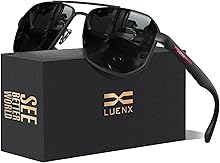
SNAP-10A, the world’s first operational nuclear reactor in space Premium
The Hindu
Launched on April 3, 1965, SNAP-10A was the world’s first operational nuclear reactor in space. While it still remains in orbit, it was operational for just 43 days.
Do you know what nuclear reactors are? A class of devices that contain and control sustained nuclear chain reactions, these systems are at the heart of any nuclear power plant. While nuclear power plants produce clean and renewable energy that can then be used to power homes, schools, office spaces, and hospitals, their byproduct is radioactive material, which can be extremely toxic and hence has to be dealt with carefully.
It is no surprise that building nuclear reactors – which releases the nuclear energy in the nucleus or the core of the atom through the process of nuclear fission – needs a high level of technology. Most of the nuclear power plants in the world are, therefore, located in a few countries that possess the necessary technology.
There is, however, a nuclear reactor that is in Earth orbit. The U.S.’ first and only known space nuclear reactor, the SNAP-10A was the result of the government-sponsored System for Nuclear Auxiliary Power (SNAP) programme, also known as SNAPSHOT for Space Nuclear Auxiliary Power Shot.
The objective of this programme, for which considerable effort was spent in the 1950s and 1960s, was to develop compact, lightweight, reliable atomic devices that could then be employed in space, sea, and land. Facilities to support the development and testing of the reactors and related hardware were constructed within Santa Susana Field Laboratory Area IV.
In the case of SNAP-10A, the objective was to produce at least 500 watts of electricity for a year or longer. Designed to be remotely started and operated in space, the entire system weighed less than 431 kg, including the instruments and shielding.
The plan to operate it remotely was put in place so that any radiation hazard associated with nuclear fission does not take place until after the reactor is put into orbit. This not only eliminates radioactive exposure to ground personnel (as byproducts are produced only after operation), but also reduces the overall risk, should there be an accidental reentry during launch.
Using enriched uranium fuel with zirconium hydride as a moderator, the SNAP reactors had liquid sodium potassium alloy as the coolant. A thermoelectric converter was used to directly convert heat from the reactor into electricity.

VinFast’s entry into India is a strategic one, and it comes with real investment. The company is setting up a manufacturing facility in Tuticorin, Tamil Nadu, with an initial capacity of 50,000 vehicles per year, scalable to 150,000 units annually. With an investment of up to USD 500 million, this is not a soft launch—it is a full-fledged push into what is one of the world’s most promising auto markets.

On June 7, 1742, Prussian mathematician Christian Goldbach wrote a letter to Swiss polymath Leonhard Euler. Why does it warrant attention, you seem to be asking. Goldbach outlined a conjecture that bears his name in this letter, a conjecture that is now one of the oldest and most famous unsolved problems in all of number theory. Intrigued? A.S.Ganesh hands you more details about Goldbach and Goldbach’s conjecture…





















 Run 3 Space | Play Space Running Game
Run 3 Space | Play Space Running Game Traffic Jam 3D | Online Racing Game
Traffic Jam 3D | Online Racing Game Duck Hunt | Play Old Classic Game
Duck Hunt | Play Old Classic Game









